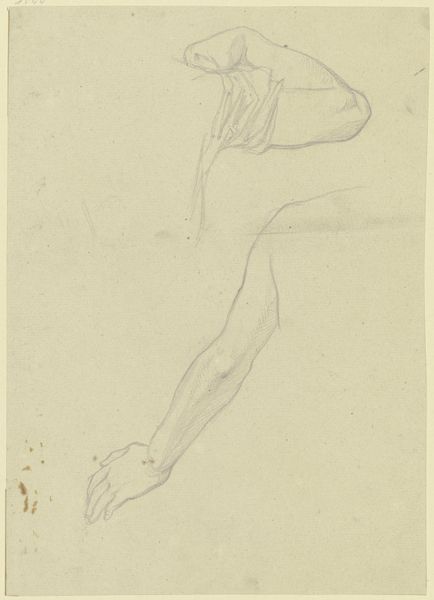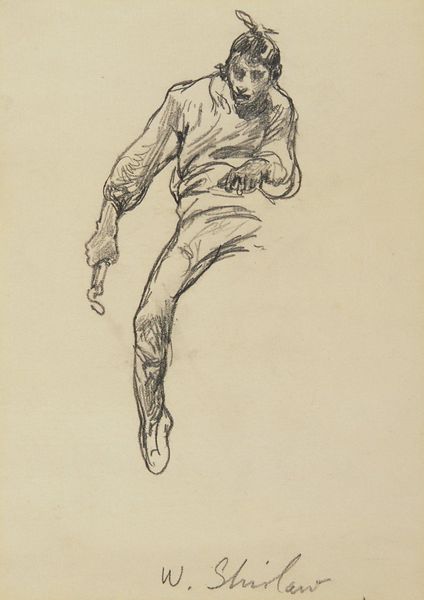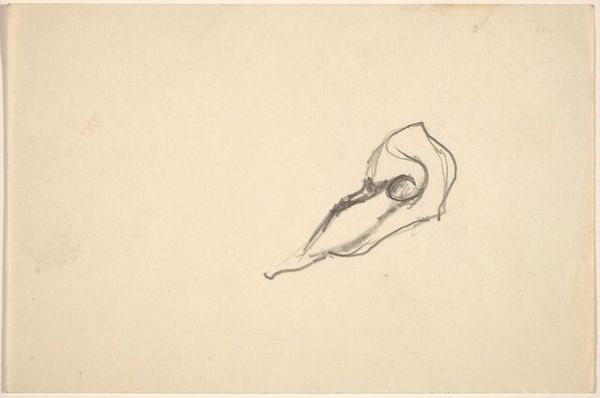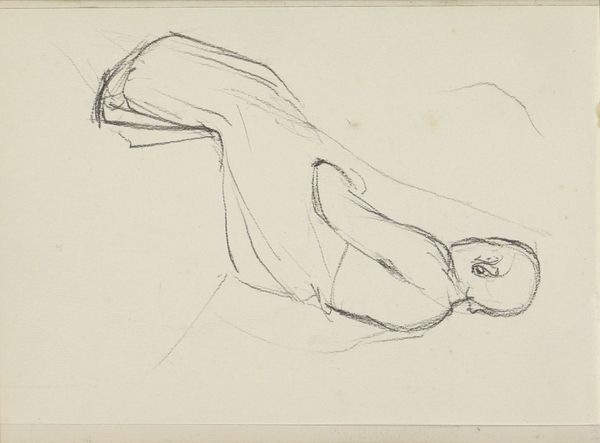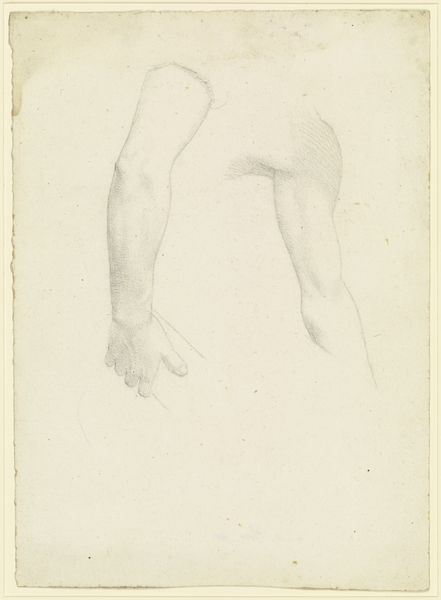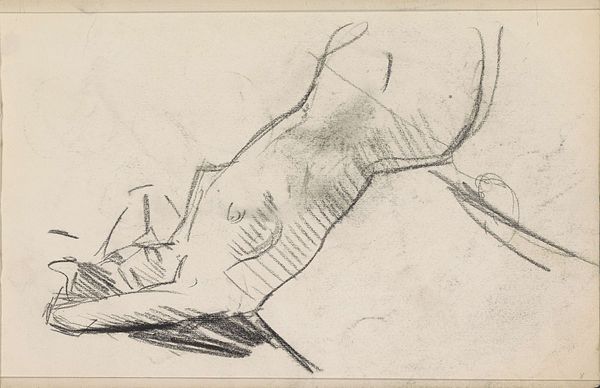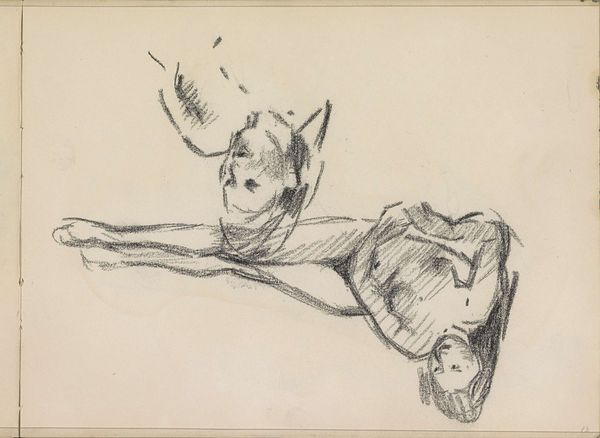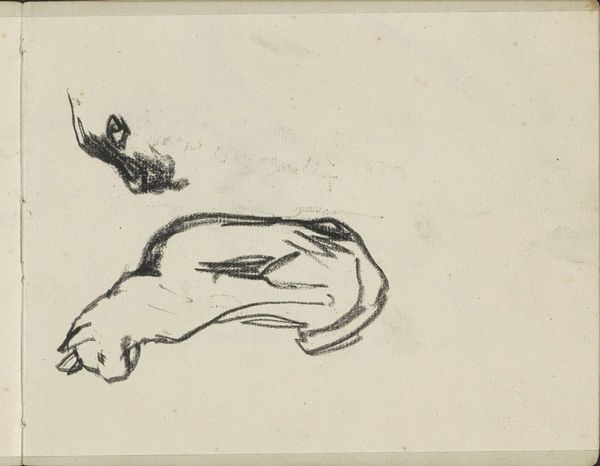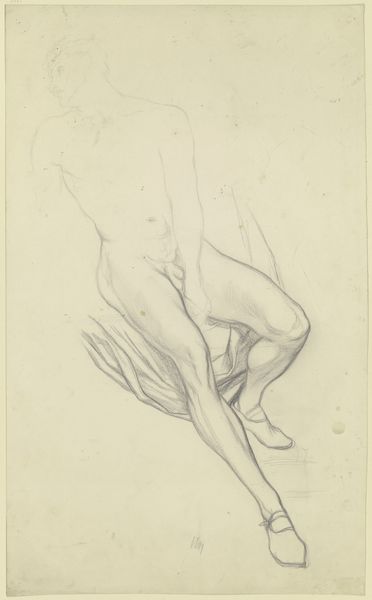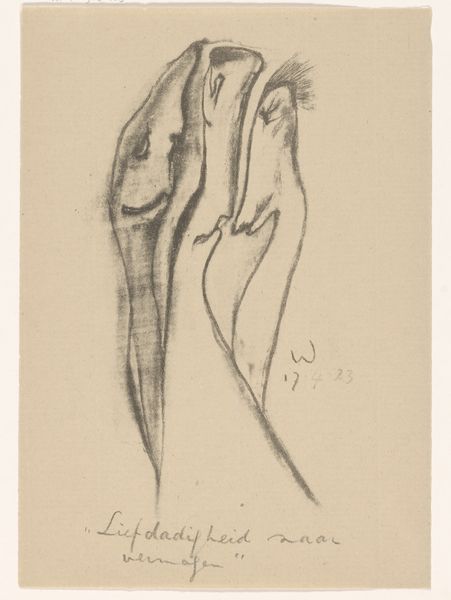
drawing, graphite
#
portrait
#
drawing
#
imaginative character sketch
#
light pencil work
#
art-nouveau
#
shading to add clarity
#
cartoon sketch
#
personal sketchbook
#
idea generation sketch
#
ink drawing experimentation
#
pen-ink sketch
#
graphite
#
sketchbook drawing
#
sketchbook art
Dimensions: height 313 mm, width 241 mm
Copyright: Rijks Museum: Open Domain
Curator: Jan Toorop's "Studieblad met arm en hand," dating from somewhere between 1868 and 1928, resides here at the Rijksmuseum. The work is crafted with graphite, capturing two studies of a human arm and hand. What strikes you first about this drawing? Editor: It's the simplicity. It's a quick study, undeniably, but there's a stark vulnerability laid bare by the very limited use of materials, just graphite on paper, forcing you to confront the physicality of the subject without adornment. It almost feels like evidence. Curator: It certainly invites consideration of the body as a motif, doesn't it? Throughout art history, hands in particular, like those presented in this study, often symbolize labor, skill, or even benediction. The closed fist, poised slightly above the more extended arm, conjures multiple symbolic meanings. Strength, potential violence, or perhaps restrained creativity? Editor: Or perhaps access, control. Look at the visible pencil strokes—rough, immediate, betraying the hand that guided them. The labor of creation is literally evident in the texture and process of layering the graphite to define the form. I wonder, was this sketch intended as preparation for a larger piece, or was the pure act of capturing this human detail the aim? Curator: That’s an interesting proposition, because hands in the late 19th and early 20th century can also be associated with emerging spiritualist movements, mediums, or the laying on of hands as healing. Editor: But is it a conduit for something divine or merely the instrument to toil, to build? Considering the art nouveau influence present during Toorop's career, does that aesthetic lens shift how we perceive this "simple" drawing of just an arm and fist? Curator: Perhaps art nouveau, with its own distinct symbolic vocabulary of natural forms and flowing lines, suggests an attempt to elevate and spiritualize the physical form. Even a seemingly basic anatomical study can carry symbolic weight and allude to grander ideas about the connection between humanity and something intangible. Editor: Right, the physical arm becomes less about pure function and more about an allegorical extension of human will and expression within society, where the artist leaves these beautiful, yet raw material marks in a race against time to memorialize them in this temporal world. Curator: Indeed, a sketch so seemingly direct sparks so many possibilities. Thank you for offering a differing vantage point on Toorop's piece. Editor: My pleasure! It's in those differing opinions we appreciate artwork on a far deeper and personal level.
Comments
No comments
Be the first to comment and join the conversation on the ultimate creative platform.
